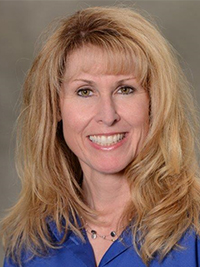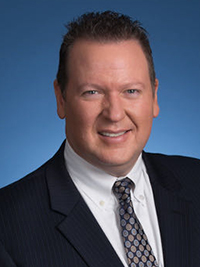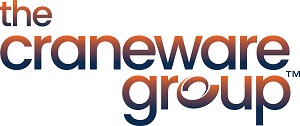How healthcare organizations are navigating the era of price transparency
As consumers deal with the impact of rising prices and interest rates, transparent and defensible pricing in healthcare has taken on even greater importance.
Since January 2021, a wave of price transparency regulations — including new rules around transparency in coverage that took effect in July 2022 — has put pressure on healthcare organizations to invest in technology and staff to give consumers greater information around healthcare costs. Yet by August 2022 — 20 months after the Hospital Price Transparency Rule took effect — just 16% of hospitals had complied with the rule by posting their charges and negotiated rates, according to a PatientRightsAdvocate.org report.
And while CMS began to fine hospitals for noncompliance with price transparency regulations in June 2022 and issued warning notices and requests for corrective action to hundreds of others, it’s unclear whether the threat of penalties for noncompliance will prompt widespread action.
How are hospitals navigating regulations around price transparency — and what has been the impact on hospital pricing and negotiation of payer contracts? In this HFMA Roundtable, sponsored by The Craneware Group, healthcare leaders from across the nation discuss common challenges and the effect on their organizations.
Measuring hospital price transparency compliance
| Report Date | Hospital Reviewed | Compliant hospital | Percentage Compliant |
| August 2022 | 2,000 | 319 | 16% |
| February 2022 | 1,000 | 143 | 14.3% |
| July 2022 | 500 | 28 | 5.6% |
Source: The “Third Semi-Annual Hospital Price Transparency Report,” PatientRightsAdvocate.org, August 2022, Used with permission https://www.patientrightsadvocate.org/august-semi-annual-compliance-report-2022.
Can you tell us from your perspectives how challenges related to the pandemic, government regulations around price transparency, staffing shortages and increasing costs are impacting our healthcare system and the value cycle?
Seth Katz: We love [the price transparency regulations]. I think they are good for the consumer. It’s a shame that most hospitals have not complied, but that’s something we’ve tried to do for years. Five or six years ago, the Missouri Hospital Association tried to get hospitals to post a central list of charges for shoppable services, but there was this odd belief that: ‘Consumers won’t understand; they don’t need to know upfront what those prices are.’ That makes no sense to me. Yes, the price transparency rule does create more work for us, but it makes patients more informed, and that’s what we want.
Laurie Hurwitz: I agree with Seth: I believe every patient has a right to understand not only what their course of care is going to look like, but also what it’s going to cost them. The unfortunate thing — and we did comply — is that the way the government had us do this is confusing to patients. The process was inefficient, ineffective and expensive. I think the No Surprises Act gets us closer to something that’s actually useful for the patient, at least for the uninsured.
What is also challenging is that I need to keep hiring more people to deal with the requests for estimates. But it’s completely the right thing to do. And I am mystified by the systems that have just chosen to take their million-dollar fines. It makes all of us look like we are unwilling to be transparent, that we are unwilling to be truthful.
Martin D’Cruz: We’ve used the information available publicly to compare our pricing with hospitals that have published their prices. Unfortunately, many of them have not done so. We’re doing everything we can to make this data more accessible to our population, especially in the outpatient arena. But the reality is that, yes, we’re going to take a reduction in revenue. So I think every hospital is looking at being cost-efficient, managing FTEs more effectively. We’re looking at issues we have related to inflation, supply chain, wages, medical bad debt and we’re having a dialogue with health plans, and we want to be very transparent about showing where we are. When I’ve talked with other systems in my market, everybody’s doing the same thing: Researching to see what their competitors are getting paid. It is a lot of work.
Troy D. Spring: We spent a lot of time building out shoppables and putting them in an easy and accessible format. We monitor who’s shopping, and there are media and competitors who are viewing that data, along with consumers, but the number of people who are shopping for care is still very small, and that’s a bit discouraging. After all the work we’ve done in providing this information to the community, how do we better connect the dots for our patients and help them know where to go to access this data?
Richard Boggess: The one comment that stood out to me was from a gentleman from an insurance carrier. He said, ‘I was so grateful that you folks all complied [with the new price transparency regulations], because I then turned loose my huge data analytics team on all of you to find out where the best prices are because I’m going to start to drive that through my organization. So thanks for doing that.’ Well, that’s interesting. At Arbor Health — which is located halfway between Portland and Seattle, in the mountains — we’re not going to compete on every single price item. The expertise that it takes to provide that level of pricing transparency just does not exist in our neighborhood. It’s a challenge to find folks in the market who can do this.
Inflation is starting to impact our industry in a variety of ways: staffing, medication and supplies, operating costs and more. We may also be seeing a decline in services as consumers who are feeling the pinch of inflation may not address health issues. How do you suggest our healthcare systems hedge against rising inflation?
D’Cruz: As a system, we used to use the Bureau of Labor Statistics data around price changes for medical care, which was to our advantage over the last couple of years. But when we looked at this year’s statistics, the increase in medical costs is running at about 4%. We decided to look at the inflation factor, which [in May 2022] was 8.6%. So because of the fact that previously supply chain was not an issue, labor was not an issue or even pharmacy, this year we decided to look at our budget and determine the impact of inflation. [We also decided to look at] the need for competitive wage increases and the producer price index on cost and be very transparent with health plans in sharing our budget and showing them where we need to be as we move forward.
Hurwitz: Our contracts are a combination of fixed rates and percentage of charges, and all of them have annual rate increases built in for the fixed rates; and then they have a chargemaster cap percentage where if we raise our rates more than whatever that is, then it reduces the percentage of charges that they’re going to pay us. And we’ve worked very hard over the past four years to raise rates less than inflation. And the theory is, yes, the cost of drugs and supplies has gone up; we have to give market adjustments to our employees to be competitive and all that, but we all know there are a lot of efficiencies that we could eliminate to help avoid raising our rates as much as we have in the past. But this year, we’re raising them more than we have in the past because we have absolutely no other option given cost increases of 10%. I’m working with our payer partners on off-cycle rate increases.
Spring: I think the waters are going to be choppy [until at least until December 2023] with the economy based on how things are looking now. In the old days, cost shifting was the approach to leveling the playing field from a reimbursement standpoint, but with the move to fixed reimbursement, we’re stuck. I do think labor costs will stabilize, especially with travel nurses. There is some thought that [the increase in travel nursing costs] was an anomaly. With inflation, consumers worry about being able to pay for care, and down the road there may be a price to pay as folks that delayed care come to us with more severe illnesses like we saw during COVID. It will be interesting to see how it plays out. But I’m not real bullish on that … with the challenges we are facing.
Thomas “Skip” Morgan: There’s another cost shift that’s taking place because the inpatient rule is suggesting a 3.2% increase in the wage and the base rate, and that’s from three years ago. So we’ve got that lag happening, and we’ve got to recover that [revenue], and the only way we can potentially recover that is from our commercial payers. It’s just a difficult situation.
Michelle Brandt: The struggle is real for all hospitals and health systems, big or small. Now, we’re all in the loss range.
Adrienne Sowers: It’s a matter of looking at your managed care contract terms and seeing where it makes sense to raise those prices. What is a non-commodity service versus a shoppable service? How does that align with your carveouts in your contracts for high-cost drugs or implants? What’s fixed fee, and how many cases do you have hitting your stop-loss terms? It’s a matter of being strategic with those increases and decreases. That can be a tricky thing to do. But at the end of the day, if you can stick with that 5% overall increase, your net increase is going to exceed that. It’s a lot of revenue rebalancing.
How will transparency affect the process around negotiating commercial payer contracts? What are some proactive strategies — short-term, middle-term and long-term — that hospitals should put in place to address these challenges?
Hurwitz: We’ve done the analysis, so we know what payers are paying other hospitals in our markets compared to what they are paying our hospitals. When payers tell me that they’re paying us too much, I can point out where they are paying us less than market.
Katz: What I worry about is that the payers would start using it for an audit: ‘Oh, if you accepted that from Humana, then I could drop my rates, because you obviously were okay with them doing it.’ Instead of being proactive and being like, ‘Hey, maybe we should try to settle this, and maybe we should get a network, because obviously a lot of your members choose to come here.’ I think [the increased level of transparency] might drive people away from wanting to do [agreements around quality payments]. I think we’re all a little scared that it’s going to have a negative effect instead of what I think we hoped it would do, which is, ‘Oh, we see your pain, Hospital. You do serve a lot more of our members, and we should adjust our rates accordingly.’ It could hurt us a lot more than it’s going to help us.
Spring: From the payer’s perspective, the payers love it as it gives them an ability to create a race to the bottom with rates. It may come to a point where you can’t have every service line at a hospital. A hospital may have to say, ‘We’re going to do babies and hearts,’ because you can’t afford to do everything. Hospitals may be forced to specialize.
Panel

RICHARD BOGGESS
CFO at Arbor Health in Morton, Washington

MICHELLE BRANDT
Vice president, physician, ambulatory contracting and credentialing managed care at MedStar Health, Inc. in Baltimore, Maryland

MARTIN D’CRUZ
System vice president, managed care and valuebased care at Baptist Health System Kentucky and Indiana in Louisville, Kentucky

LAURIE HURWITZ
Senior vice president, revenue cycle and managed care at OSF Healthcare System in Peoria, Illinois

SETH KATZ
Vice president of revenue cycle and HIM at University Health in Kansas City, Missouri

ADRIENNE SOWERS
Vice president, payer and pricing analytics at The Craneware Group in Atlanta, Georgia

TROY D. SPRING, MHA, CHFP
Vice president, enterprise revenue cycle at Intermountain Health in Broomfield, Colorado

BRIAN WORKINGER
Senior vice president, revenue intelligence at The Craneware Group in Atlanta, Georgia
THOMAS “SKIP” MORGAN
Vice president, integrated reimbursement at MaineHealth in Portland, Maine
About The Craneware Group
The Craneware Group (AIM: CRW.L), the leader in automated value cycle solutions, collaborates with U.S. healthcare providers to plan, execute and monitor operational and financial performance so they can continue to drive better outcomes for the communities they serve. The Craneware Group’s Trisus platform combines revenue integrity, cost management and decision enablement into a single SaaS-based platform. Our flagship solution, Chargemaster Toolkit®, continually earns KLAS recognition in the Revenue Cycle – Chargemaster Management category and is part of our value cycle management suite, which includes charge capture, strategic pricing, 340B compliance, claims analytics, patient engagement, revenue recovery and retention, and cost and margin intelligence solutions.
This published piece is provided solely for informational purposes. HFMA does not endorse the published material or warrant or guarantee its accuracy. The statements and opinions by participants are those of the participants and not those of HFMA. References to commercial manufacturers, vendors, products, or services that may appear do not constitute endorsements by HFMA.






